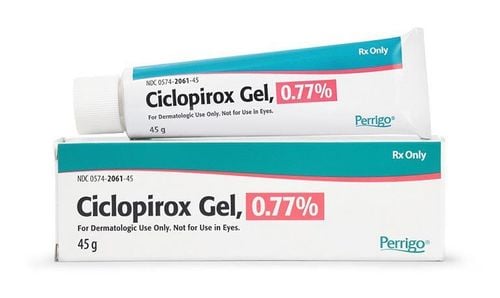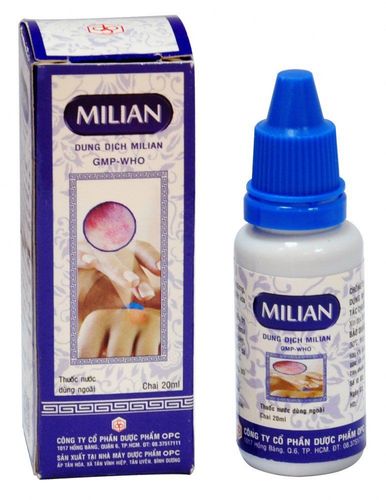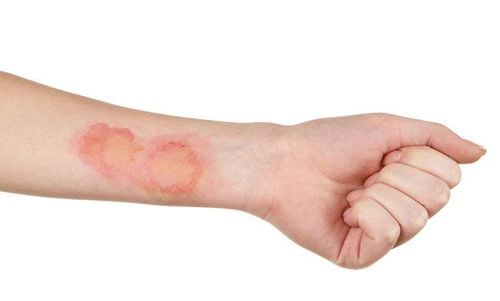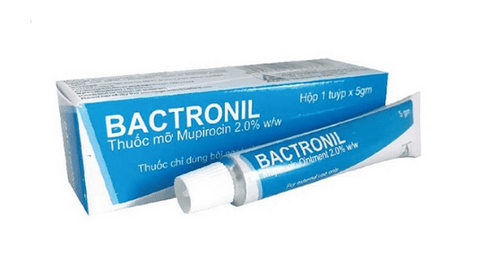This is an automatically translated article.
The article was consulted with Specialist Doctor I Le Thi Thu Hang - Dermatologist - Department of Medical Examination & Internal Medicine - Vinmec Hai Phong International General Hospital.Impetigo is a skin infection caused by bacteria and is highly contagious. It is most common in children, but adults can also get it. Patients with impetigo often present with red sores and oozing blisters.
1. What is impetigo?
Impetigo is a skin infection that is mainly caused by bacteria that causes blisters or sores anywhere on the body, but usually on the face (around the nose and mouth), neck, hands, and skin. swaddling (in children).The disease is very contagious and can be cured with antibiotics.
2. What causes impetigo?
Two main types of bacteria found on the skin are responsible for impetigo: Staphylococcus aureus and Streptococcus pyogenes (which is also the cause of granulomatous pharyngitis). According to experts, normally these bacteria exist on the skin and do not cause disease. However, if an infected person has a small wound, scrape or insect bite, the bacteria can cause an infection and lead to impetigo.In fact, anyone can get impetigo, in some cases it can happen more than once. Although impetigo is a year-round illness, it is most common during the warmer months. In the United States, more than 3 million people get impetigo each year.
The disease usually occurs mainly in children between 2 and 6 years old, the cause may be due to the child scratching a lot. This makes it easier for bacteria to spread.
If you touch an infected child's sores or touch objects such as towels, clothing or bed linens of sick people, you can get these bacteria.
Some people are at higher risk of developing the disease if the following factors are present:
Warm, humid areas People with diabetes Patients on dialysis People with immune systems weakened immune system, possibly due to HIV infection Due to conditions such as eczema, dermatitis, or psoriasis From sunburn, skin burns From insect bites Injuries from playing contact sports such as football, basketball ....
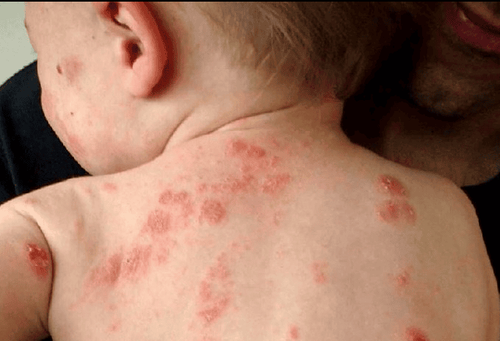
3. Treatment of impetigo
A common sign in children with impetigo is red sores or blisters. Red, fluid-filled sores can quickly break open and form patches of rough, yellow-brown skin.These sores can grow larger, spread to other parts of the body, causing itching, in some cases pain.
If you see these symptoms, take your child to see a specialist for examination and treatment. Impetigo is usually treated with topical or oral antibiotics. If you have multiple sores, your doctor may prescribe an oral antibiotic. There is no over-the-counter (OTC) treatment for impetigo. Even if the ulcer has healed, you still need to take the medicine exactly as it is supposed to. This will help prevent recurrent infections and reduce antibiotic resistance.
4. Control and prevent impetigo
If left untreated, impetigo usually clears up on its own in a few days or weeks. It is important to keep the infected site clean with soap and water, and not scratch at all. In some cases, if left untreated, the disease can develop further lesions that spread to other areas of the body.Impetigo is spread by direct skin-to-skin contact with the affected area. Avoid spreading impetigo to other people or other parts of the body by:
Clean infected areas with soap and water. Cover scabs and sores until they heal. Gently remove hard scales. Wash your hands with soap and water after touching an infected area or infected person. When applying antibiotic ointment, you should wear gloves and wash your hands thoroughly afterwards. Wash your hands often. Until the doctor determines that the child is no longer contagious, the child should be kept at home.

Contact your doctor immediately if symptoms do not go away or if there are signs of infection getting worse, such as fever, pain, or increased swelling.
Please dial HOTLINE for more information or register for an appointment HERE. Download MyVinmec app to make appointments faster and to manage your bookings easily.
Reference source: fda.gov





